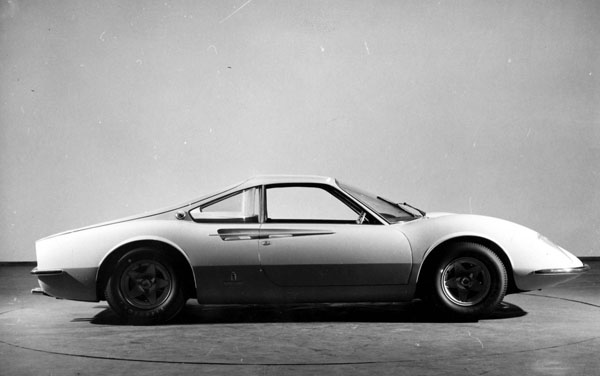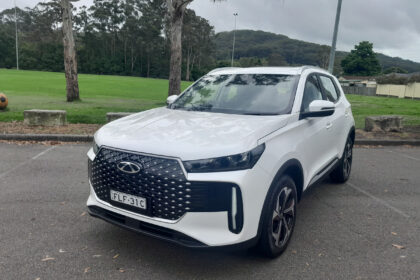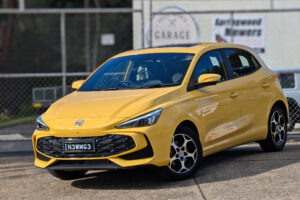
Some Ferrari stories start with an engine, and the story of the very pretty little Dino road car is no exception. In the 1950s Ferrari’s development team, which included Vittorio Jano and Enzo Ferrari’s son Alfredo, were involved in a program of developing a V6 engine for racing.
Initially the unit had a capacity of 1.5-litres with a 60-degree angle between the bore centres, designed to power a Formula Two car. Subsequently the engine was altered slightly by increasing the bore centre angle to 65 degrees, and in this form the engine managed a third place in the Naples Grand Prix in 1957.
Sadly, Alfredo – or Dino as he was known – had died from leukaemia the previous year, but the pattern had been set and the racing V6 program was extended – Ferrari decreeing that, in memory of his son, all future V6 engined cars would be called Dinos. It was used in various competition cars, and in various forms, for 10 years before thought was given to using it in a road car. That was spurred by a perceived need to broaden Ferrari’s market, and a smaller car to compete with Porsche was attractive in that respect.
The next step was to slightly redesign the engine, giving it a new cylinder block which, depending on bore and stroke, could provide any capacity from 1.5 to 2.9-litres. The most successful of these were the 1.5-litre versions, which were used in Grand Prix cars, and the 2.0 and 2.5- litre engines used in F1. This, then, was the background against which the V6 engine made its name.
But then Ferrari announced that, for 1967, he would run with V8 engines in his Formula Two cars which, of course, had previously been powered by V6s. However, no sooner had this announcement been made than the rules covering F2 were issued excluding V8 power units! Not only that, but Formula Two engines had to be derivatives of production units – and that meant a minimum of 500 units available to the general public.
Not surprisingly, this put Ferrari in a difficult situation as he was not geared up for that sort of production. Indeed, he didn’t need to be. He was a specialist manufacturer of low-volume, exclusive and exciting sportscars. Then Ferrari remembered a conversation that he had with Fiat at the 1964 Turin Motor Show, which went along the lines that if Ferrari ever needed anything, all he had to do was ask. Ferrari explained that he had a V6 engine – the Dino, with a successful racing record – but that he did not have the manufacturing capacity to meet the new ruling for Formula Two.
So as to make the V6 more suitable for production it was reworked as a twin-OHC 65-degree unit, substantially over-square with bore and stroke dimensions of 85mm x 57mm, to give a capacity of 1987cc. It was rated as 135kW at 8000rpm. The first prototype car was shown by Pininfarina in 1965, and the second, somewhat modified and rationalised for possible production, was shown in the following year. In its original form the car had the engine installed longitudinally, but in the final version it was mounted transversely ahead of the rear axle line. Double wishbone and coil spring suspension was used and relatively large disc brakes were fitted. Also, this was the first road car built by Ferrari to have rack and pinion steering.
When mass production began there were some misgivings about making a cheaper Ferrari, and at the same time Fiat also introduced a Bertone-styled Dino coupe and later a Pininfarina-styled Dino convertible. That ensured that the V6 was produced in quantity, but in a modified form. Primarily, the Fiat cylinder blocks were cast in iron rather than in light alloy, and both bore and stroke were opened out to give a capacity of 2418cc. In this form, maximum power of 145kW was achieved at a slightly lower engine speed of 7600rpm.
Ferrari production of the Dino 206GT was low, but soon increased when the Fiat engine was adopted for 1969 and sheet steel bodywork substituted for the hand-shaped aluminium panels of the 206GT. Other changes increased the overall dimensions slightly, but to all outward appearances the models were identical. The only substantial change before production ended in 1974 was the introduction of a Targa-top 246GTS in 1972. The 246 was never developed for competition as the 206 had been.
Because of its weight – it tipped the scales at 1090kg – its maximum speed of 238 km/h was no quicker than its rivals. In other respects, its overall handling qualities, as well as braking, traction and cockpit comfort were excellent. Production in six years totalled 3900 cars, almost a third of them GTS cabriolets.









